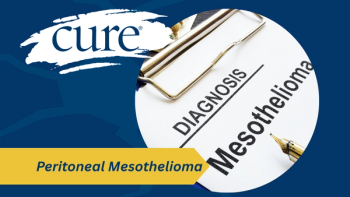
- MPN Special Issue 2023
- Volume 22
- Issue 03
Adjusting to Cancer Together
Patients and their caregivers may benefit from community support and education following an MPN diagnosis
Because myeloprolifeartive neoplasms (MPN) can cause chronic disease, spanning years or even decades, some patients need their significant other or another loved one to become their caregiver. This change and the adjustment it requires can strain a relationship and impact quality of life.
A study published in the Journal of Clinical Nursing found that patients with MPNs and their caregivers have a hard time adjusting to “the lives the disease enforced upon them” and would benefit from “psychosocial support, patient education, peer support and rehabilitation interventions” based on individual needs.
Wim Smits and his wife, Harriet Randall, understand the challenges firsthand — Smits received a diagnosis of primary myelofibrosis in 2018 after routine bloodwork.
“We were at the appointment together ... and we (were) both shocked,” Randall recalled. “He wasn’t sick at all (and) felt well. It was a total shock. And (when we were) told the name of this disease, (it was) something that we’d never heard of. I remember asking (the doctor), ‘How do you spell that?’ and trying to write down the name. And it was shocking to discover that there was no real treatment or cure, per se, other than treating the symptoms. I just remember leaving there in complete shock.”
The Effects of Living With the Disease
The study on patient and caregiver needs included 48 patients diagnosed with an MPN and seven caregivers. It found that the two main themes affecting patients were:
- The loss of choice and identity due to the need to prioritize energy.
- The schism of being a person but also a patient.
Patients in the study reported that due to the disease and its symptoms, they have to prioritize their energy, which results in losing the freedom to do what they want. This, in turn, changed their identity and negatively affected their quality of life. In addition, the study found that patients of working age seemed to “struggle the most in balancing the disease, family, social relationships and work.”
Smits noted that he isn’t experiencing too many symptoms, so he doesn’t feel as if he has lost his identity. His approach to life with a chronic disease is probably best explained as pragmatic.
“I just accept it now, and say, ‘It is what it is,’ ” Smits explained. “And you try to look on the bright side (and) do the best that you can. It’s life, and that’s the way things are.”
For caregivers in the study, one main theme was the influence of the disease. Caregivers reported how the disease limited their social lives, brought psychological strain and caused extra work.
Smits and Randall agree that their relationship has changed since Smits received his MPN diagnosis.
“It certainly has changed our focus as a couple,” Randall said. “Rather than trying to decide, ‘Where do we want to go this winter on vacation?’ it’s ‘Are you feeling well?’ ”
Caregivers in the study also reported that “communication between couples was impaired,” noting that they felt frustrated when talking about cancer and its effect on them.
Randall, however, felt the opposite.
“No, I don’t think (it had an impact on communication). In fact, it may have even improved the commu- nication. Both of us being retired and being home was probably a greater adjustment than this adjustment (to cancer),” she said.
Benefits of Support
The study concluded that when patients and caregivers participated in rehabilitation courses, they reported “better understanding between couples and more open conversations.” Although the rehabilitation needs identified in the study were mainly in relation to psychosocial support and patient education, needs varied depending on the individual.
Both patients and caregivers in the study reported that meeting other people who are going through the same thing was rewarding and helpful, as was receiving education about the disease — which Smits and Randall did.
The couple also benefited from counseling provided by their hospital when Smits first received his diagnosis.
“(The counselor’s) main point, and one we’ve kept in mind, is don’t catastrophize,” Randall said. “Don’t suddenly reach to the end point or (think) of the worst thing that can happen. Just stay right in the moment and enjoy everything. And that was more than three years ago and just something I think we both keep in mind.”
Smits will soon undergo a stem cell transplant, so Randall said it might be a good time to go speak with that counselor again. Smits added that Princess Margaret Cancer Centre in Toronto, where he’ll undergo the transplant, offers a support program for caregivers, which his wife may benefit from.
Like those in the study, Randall and Smits have found it helpful to interact with people on the same journey. Specifically, online groups and various Zoom meetings have helped educate them as well as connect them with people going through the same thing.
“It’s very useful to talk to somebody who’s been there and done that. It does give you a different perspective,” Smits explained.
Randall added that she’s also a member of different Facebook groups that provide information and support — but it’s even better to know that she and Smits aren’t alone.
“(When) I’m on Facebook and I check out those groups ... if it’s anything interesting, I’ll read it aloud. It’s been some good information and (helps) to know that we’re not alone in this,” she concluded. “Certainly, in the beginning, it felt like such a rare disease that no one else had. But that is one positive thing about Facebook — that you can find out there are a lot of other people who have gone through this experience.”
For more news on cancer updates, research and education, don’t forget to
Articles in this issue
over 2 years ago
Strategies for Improving Life With a Chronic Diseaseover 2 years ago
4 Steps to a Delicious, Healthy Smoothie for Cancer Survivorsover 2 years ago
One Step Closer to an MPN Cureover 2 years ago
Diet May Impact Symptom Burden in Myeloproliferative Neoplasmsover 2 years ago
Novel Approaches Create a Bridge to Transplant in MPNs




